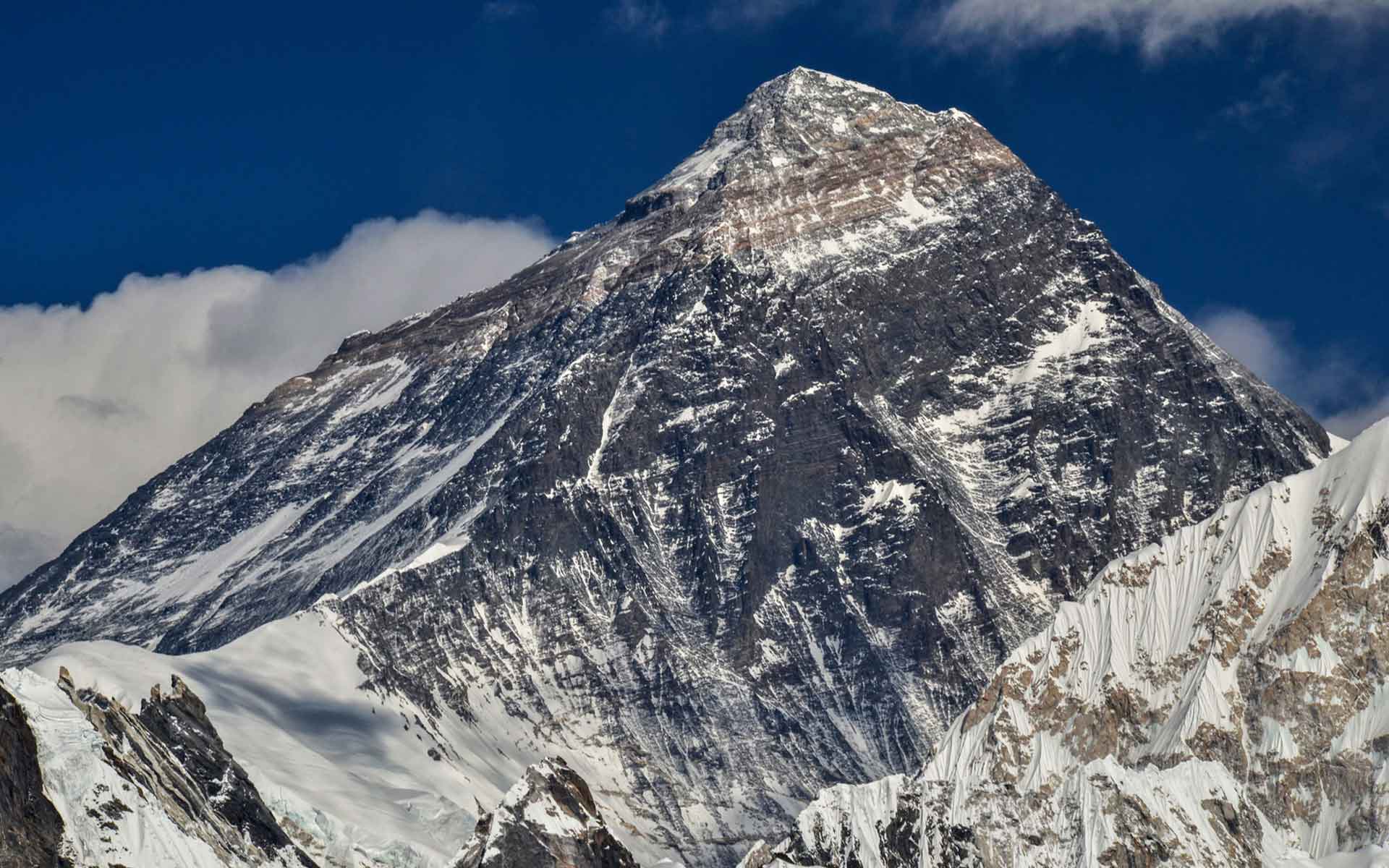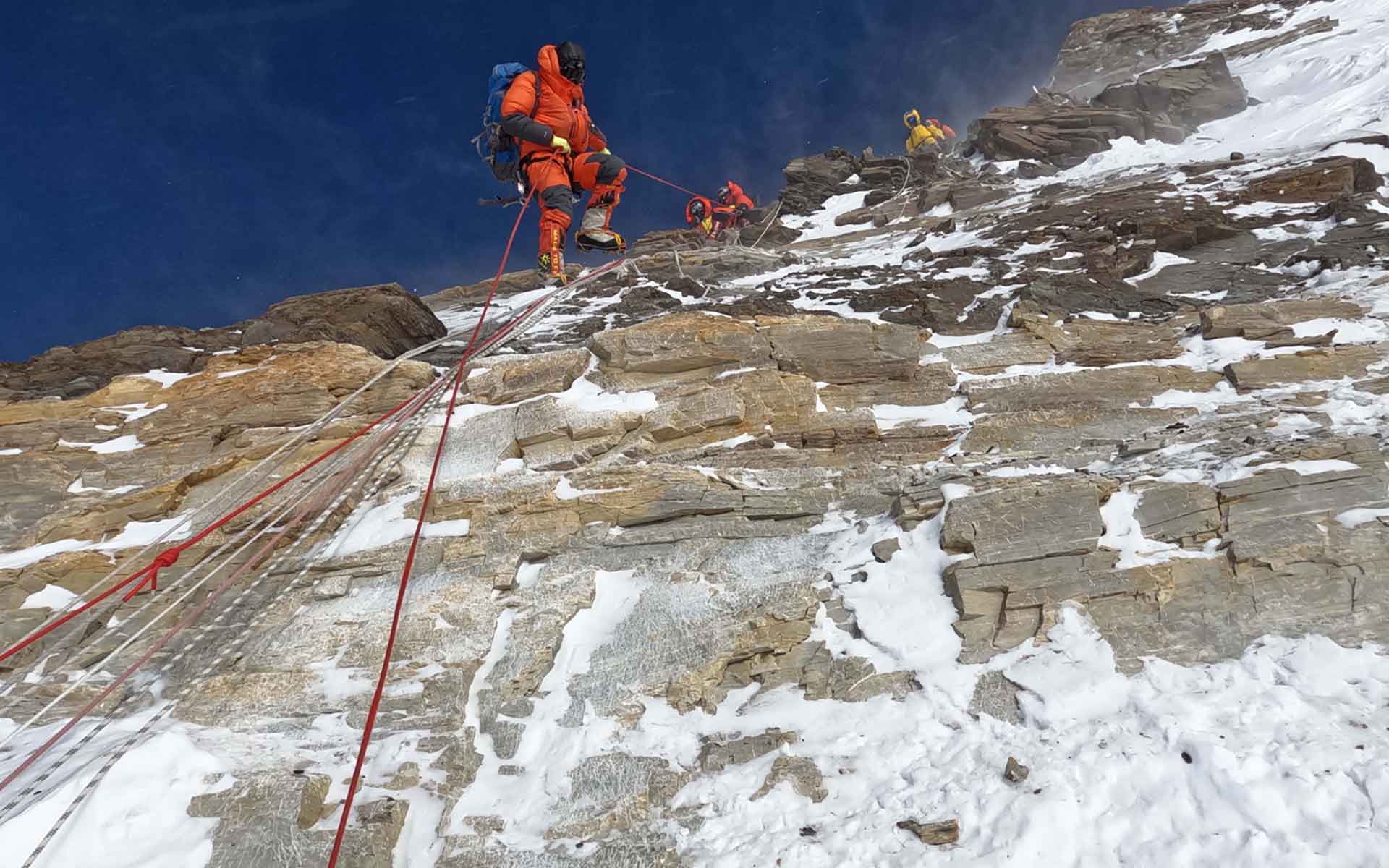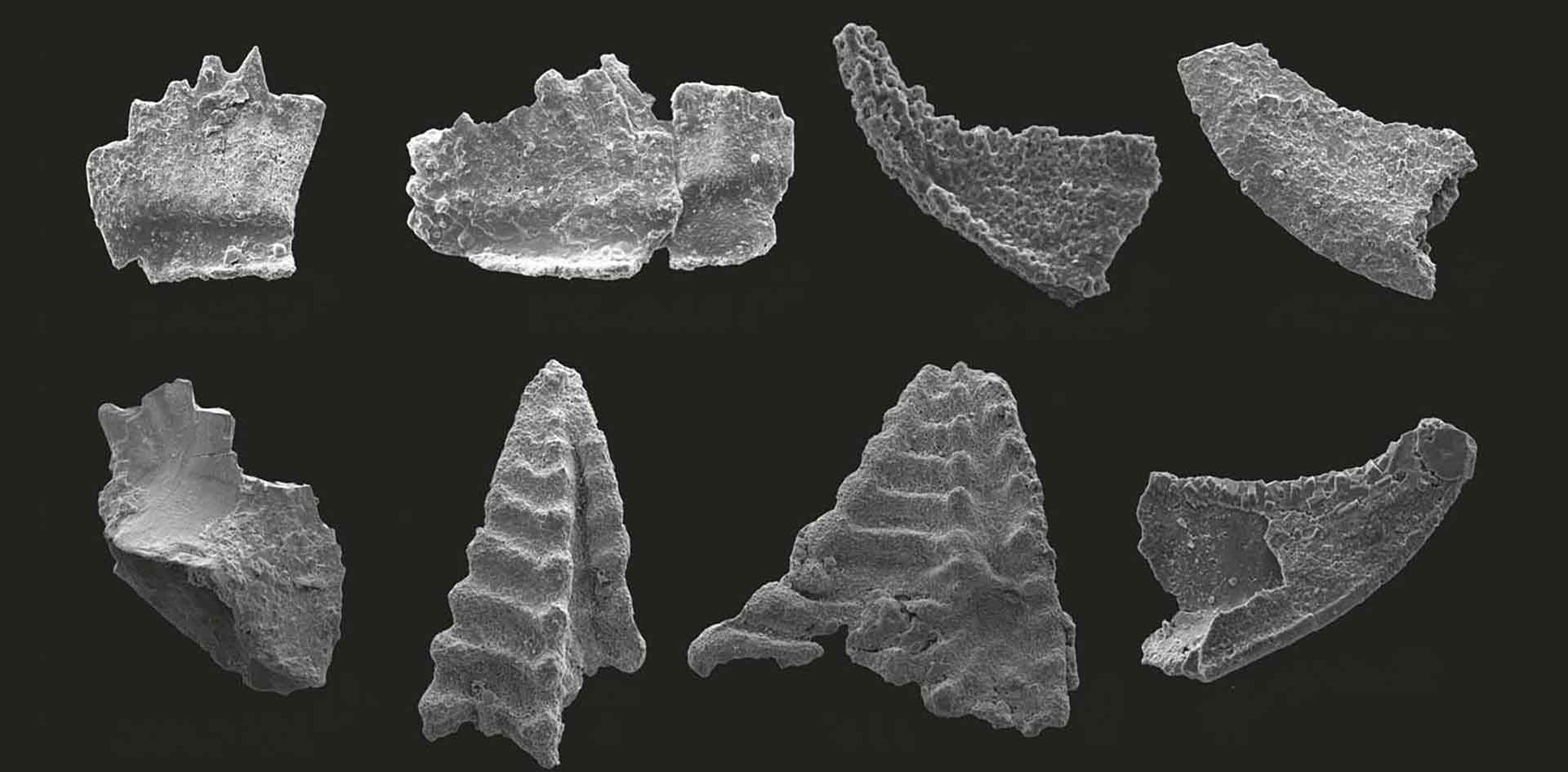
The majestic slopes and summit of Mount Everest viewed from Gokyo Ri at 5.350m Above the sandstones of the Yellow Band, pale grey limestones here on the summit, and elsewhere have yielded Middle Ordovician (Darriwilian fossils). (Photo: Luis Carcavilla).
Geological Period
Middle Ordovician (Darriwilian)
Main geological interest
Stratigraphy and sedimentology
Paleontology
Location
Everest Range, Nepal and Tibet, China.
27°59’17.0″N, 86°55’30.0″E
The majestic slopes and summit of Mount Everest viewed from Gokyo Ri at 5.350m Above the sandstones of the Yellow Band, pale grey limestones here on the summit, and elsewhere have yielded Middle Ordovician (Darriwilian fossils). (Photo: Luis Carcavilla).
Now located on the roof of the world, the highest rocks in the planet are fossiliferous, marine limestone.
Mount Everest (Qomolangma) is the highest point on the Earth’s crust, an iconic symbol of beauty and human achievement. Commonly known as the Roof of the World, or the Third Pole, the Himalayan plateau supports a unique ecosystem but also captures the evidence for the evolution of the best-known of the planet’s tectonic belts (Myrow et al., 2019). The summit of the mountain is a tropical Middle Ordovician limestone with abundant and diverse marine fossils that formed part of an ancient seafloor long before the collision of India with the Asian continent, which started about 55 million years ago.
- Geological description
The highest rocks on Earth, marking the summit of Mount Everest, are Ordovician limestones, deposited in a warm, shallow-water sea some 450 million years ago. More remarkably, these rocks still contain the fossils of marine animals such as brachiopods, conodonts and crinoids that occupied tropical habitats during one of the most important intervals in Earth history, the Great Ordovician Biodiversification Event (GOBE). These rocks, deposited in an ancient Tethyan Ocean were thrust and uplifted into their present commanding position when Indian collided with the Asian continent some 55 million years ago.
Strata at lower altitudes, equivalent to those of the summit of Everest, have yielded new shallow-water faunas dominated by brachiopods and crinoids (Harper et al., 2011) The shallow-water shelly faunas were dominated by suspension feeders including orthide and strophomenide brachiopods (Zhan et al., 2014), and a robust pentameride crinoid, ‘Pentagonopentagonalis’ (col.) sp. (Donovan et al., 2012). New conodont data precisely correlate part of the succession with the P. serra conodont Zone (upper Darriwilian); the Colour Alteration Index of the conodonts indicate a finite temperature of 350OC to 5500C (Stouge et al., 2021). This fauna was part of the Toquima-Table Head Realm, a circum-equatorial province during the late Middle Ordovician.
- Scientific research and tradition
An Ordovician age for the summit was established in the 1970s. The Ordovician also crops out at Jiacun, adjacent to the Lhasa – Kathmandu highway, north of Nyalam, at some 4.5 km altitude. Research continues on the sedimentology, tectonics and other aspects of the diverse faunas to piece together the geological history of this iconic part of the Earth’s crust (Zhen et al., 2021).
- Reference
Donovan, S.K. et al. (2012) ‘A primitive cladid crinoid from the Jiacun Group, Tibet (Darriwilian, Middle Ordovician)’, Geological Journal, 47(6), pp. 653–660. Available at: https://doi.org/10.1002/gj.2436.
Harper, D. et al. (2011) ‘Ordovician on the roof of the world: macro-and microfaunas from tropical carbonates in Tibet’, Publicaciones del Instituto Geológico y Minero de España. Serie: Cuadernos del Museo Geominero, 14, pp. 215–220.
Myrow, P.M., Hughes, N.C. and McKenzie, N.R. (2019) ‘Reconstructing the Himalayan margin prior to collision with Asia: Proterozoic and lower Paleozoic geology and its implications for Cenozoic tectonics’, Geological Society, London, Special Publications, 483(1), pp. 39–64. Available at: https://doi.org/10.1144/SP483.10.
Stouge, S. et al. (2021) ‘Middle Ordovician (Darriwilian) conodonts from southern Tibet, the Indian passive margin: implications for the age and correlation of the roof of the world’, Geological Magazine, 158(6), pp. 1010–1034. Available at: https://doi.org/10.1017/S0016756820001077.
Zhan, R. et al. (2014) ‘Middle Ordovician Aporthophyla brachiopod fauna from the roof of the World, southern Tibet’, Palaeontology, 57(1), pp. 141–170. Available at: https://doi.org/10.1111/pala.12058.
Zhen, Y.Y. et al. (2020) ‘Ordovician successions in southern-central Xizang (Tibet), China—Refining the stratigraphy of the Himalayan and Lhasa terranes’, Gondwana Research, 83, pp. 372–389. Available at://doi.org/10.1016/j.gr.2020.01.023.
- Author(s)
David A.T. Harper
Department of Earth Sciences, Durham University, Durham, UK
Luis Carcavilla
Geological Survey of Spain (IGME), Madrid, Spain


